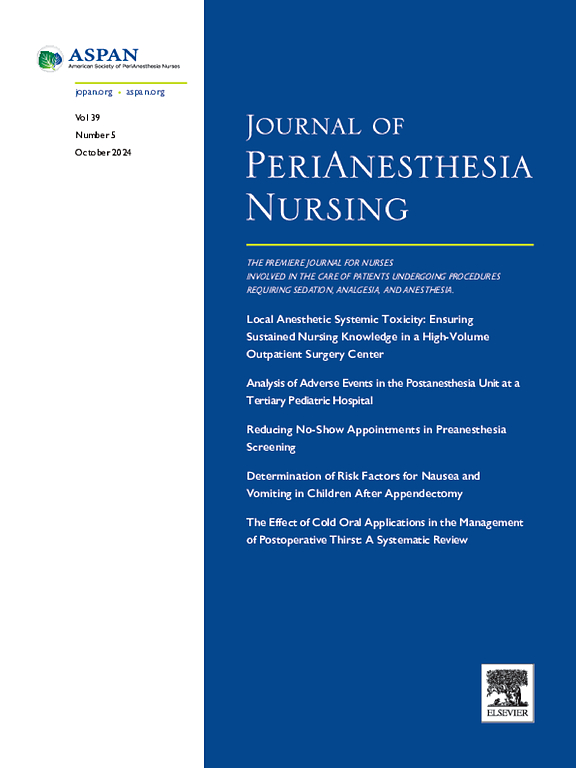Experiences of Patients Undergoing Robot-assisted Cardiac Surgery: A Qualitative Study
IF 1.6
4区 医学
Q2 NURSING
引用次数: 0
Abstract
Purpose
Over the last two decades, the use of robotic surgery in cardiac procedures has become increasingly prevalent. Typically, assessments of patient outcomes for robot-assisted surgery concentrate on patient morbidity and mortality, surgical complications, and length of hospital stay. However, there is limited research on patients' perceptions of robot-assisted surgery. Therefore, this study aims to determine the experiences of patients undergoing robot-assisted cardiac surgery.
Design
The study used a qualitative design.
Methods
The study was conducted with 12 patients who underwent robot-assisted heart surgery at an educational and research hospital. Ethical approval and written informed consent were obtained before the study.
Findings
66.7% of the participants were male with an average age of 38.25 ± 16.06 years. The analysis of qualitative data identified three themes: Robotic surgery, Post-Surgical Experience, and Homecoming.
Conclusions
Patients expressed satisfaction with robotic surgery and recommended it to others undergoing surgery. Based on the findings, we may suggest that nurses may conduct personalized education programs about robotic surgery and develop programs to follow up with patients at home.
机器人辅助心脏手术患者的经历:定性研究。
目的:在过去二十年中,机器人手术在心脏手术中的应用越来越普遍。通常情况下,对机器人辅助手术患者疗效的评估主要集中在患者的发病率和死亡率、手术并发症以及住院时间等方面。然而,有关患者对机器人辅助手术看法的研究却很有限。因此,本研究旨在了解接受机器人辅助心脏手术的患者的经历:研究采用定性设计:研究对象是在一家教育研究医院接受机器人辅助心脏手术的 12 名患者。研究前已获得伦理批准和书面知情同意:66.7%的参与者为男性,平均年龄(38.25 ± 16.06)岁。定性数据分析确定了三个主题:结论:患者对机器人手术和术后体验表示满意:患者对机器人手术表示满意,并向其他接受手术的患者推荐机器人手术。根据研究结果,我们可以建议护士开展有关机器人手术的个性化教育项目,并制定在家随访患者的计划。
本文章由计算机程序翻译,如有差异,请以英文原文为准。
求助全文
约1分钟内获得全文
求助全文
来源期刊

Journal of Perianesthesia Nursing
NURSING-
CiteScore
2.20
自引率
17.60%
发文量
279
审稿时长
90 days
期刊介绍:
The Journal of PeriAnesthesia Nursing provides original, peer-reviewed research for a primary audience that includes nurses in perianesthesia settings, including ambulatory surgery, preadmission testing, postanesthesia care (Phases I and II), extended observation, and pain management. The Journal provides a forum for sharing professional knowledge and experience relating to management, ethics, legislation, research, and other aspects of perianesthesia nursing.
 求助内容:
求助内容: 应助结果提醒方式:
应助结果提醒方式:


